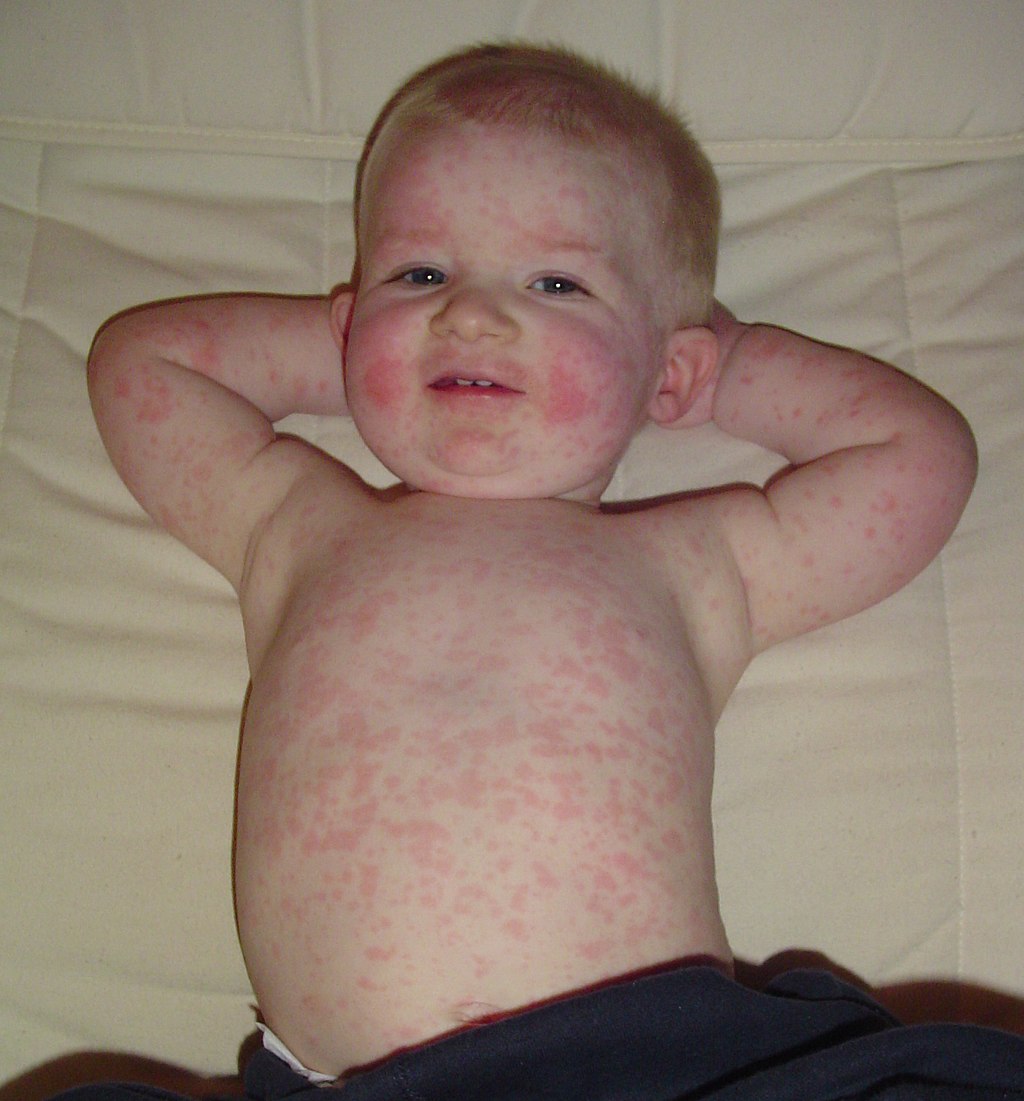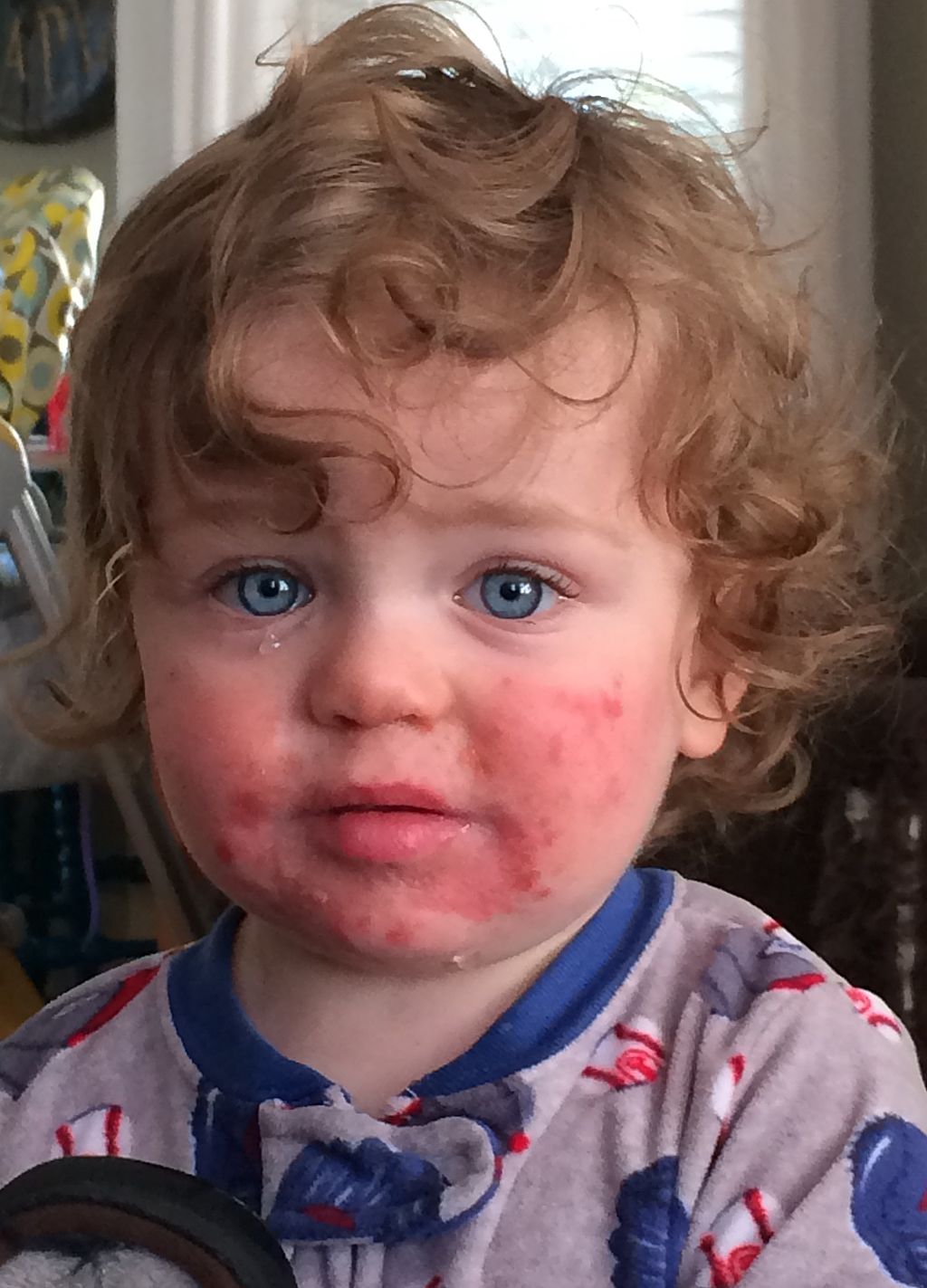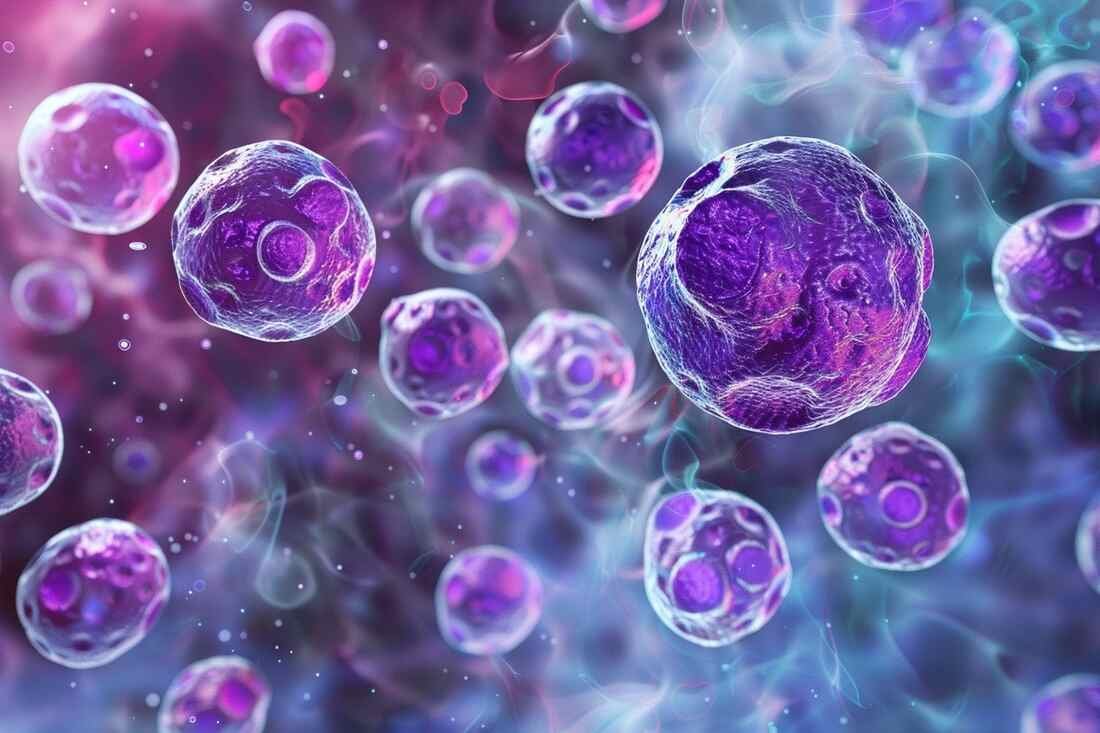Fifth Disease Caused by Parvovirus B19
Epidemic erythema, or fifth disease, or acute infectious erythema or slapped cheek syndrome, is an eruptive disease of children, contagious and usually benign, caused by Parvovirus B19.
The name of the fifth disease comes from the fact that at the time when people wanted to draw up a list of diseases causing infantile exanthema (medical term that describes a widespread rash), it was the fifth to be listed.
Fifth disease, also known as erythema epidemica, or erythema infectiosum, is a viral infection caused by human parvovirus B19, a virus that only affects humans. Generally benign, contracted in the same way as the flu virus. It is characterized by the appearance of a rash, flu-like symptoms and joint pain. Treatment aims to relieve symptoms.
To distinguish it from Dengue Fever, further examination is needed because the symptoms are similar to fifth disease.
Symptoms
Your child:
- first has symptoms similar to those of a cold (fever, dry cough, runny nose) or the flu (fatigue, muscle aches, fever);
- has very red cheeks, as if he came in from outside in the winter or if he had been slapped;
- has lace-like pink rashes on her arms and legs and these extend towards her extremities;
- has rashes, often itchy, which sometimes occur after exposure to heat or sun.
Consult the doctor if your child:
- has pain in the joints;
- has a temperature that exceeds 38.9°C (102°F);
- already suffers from anemia or a weakened immune system.
Also consult your doctor if you are pregnant and have been exposed to an infected child.

Child showing signs of erythema infectiosum, also known as fifth disease. Andrew Kerr, Public domain, via Wikimedia Commons
What causes parvovirus B19 infection?
Parvovirus B19 was successively called SPLV for Serum Parvovirus-Like Virus, HPV for Human Parvovirus and B19 from the initials identifying the blood bag where it was first identified. This is a virus that only affects humans.
Parvovirus B19 infection can be transmitted through the respiratory route. It is contracted in the same way as the cold virus, by:
- bringing your fingers to your mouth after touching an infected person;
- bringing your fingers to your mouth after touching an object contaminated by an infected person;
- inhaling small droplets containing virus particles thrown into the air by an infected person when they cough or sneeze.
The infection tends to spread within the same household. During an epidemic, non-immune contact subjects become infected in 50% of cases.
Parvovirus B19 infection can also be transmitted from mother to fetus during pregnancy, through the placenta, which can lead to late fetal death or severe fetal anemia with generalized edema (anasarca fetalis). However, almost half of pregnant women are immune from a previous infection.
Finally, this infection can also be transmitted through the blood, particularly during blood transfusions.
What are the symptoms of parvovirus B19 infection?
Signs and symptoms of parvovirus B19 infection usually appear 4 to 14 days after contracting it, sometimes longer.
Early symptoms of fifth disease are often confused with those of other infectious diseases such as the common cold. They are:
- low fever;
- headaches ;
- nasal congestion;
- runny nose;
- stomach aches.
Then appears several days later a marbled rash or consisting of raised red papules or redness of the cheeks. The rash may spread to the arms, trunk, and then the rest of the body, usually excluding the soles and palms of the hands. The rash occurs in 75% of children and 50% of adults. It results in itching and is characterized by red patches with jagged outlines that look like lace, which are aggravated by exposure to sunlight.
Anyone infected with parvovirus B19 is contagious for a few days before that characteristic rash appears. The period of contagion ends as soon as it is visible.
The intensity of symptoms varies from person to person. In 50% of cases, the infection goes unnoticed or is mistaken for a cold. Generally mild, it can be more serious in some people, including:
- children with anemia or sickle cell disease;
- people with diseases, such as AIDS, that impair the immune system’s ability to fight infections;
- the adults;
- pregnant women.
In children with anemia, sickle cell disease, or diseases that weaken the immune system, parvovirus B19 can affect the bone marrow and cause severe anemia.
In adults, swelling and mild joint pain (non-erosive arthritis) appear in 70% of cases. These joint manifestations are particularly common in women. The hands, wrists, ankles and knees are the most affected. These pains disappear in 2 or 3 weeks, but can persist or recur for weeks or even months or years.
In pregnant women, the primary infection can be responsible in 10% of cases for:
- spontaneous abortion;
- fetal death;
- fetal-placental anasarca (excessive accumulation of amniotic fluid in the fetal extravascular compartment and the cavities) which occurs rather during the 2nd trimester of pregnancy;
severe anemia; - fetal hydrops (edema of the fetus).
The risk of fetal death is 2 to 6% after maternal infection, with a maximum risk during the first half of pregnancy.
The rash and the entire illness usually last 5 to 10 days. Over the next few weeks, the rash may reappear temporarily after exposure to sunlight or heat, or in case of fever, exertion, or emotional stress. In adolescents, mild joint pain and swelling may persist or recur intermittently for weeks or even months.

The “slapped cheek” appearance typical of fifth disease. Sandyjameslord, CC BY-SA 4.0, via Wikimedia Commons
Information: Cleverly Smart is not a substitute for a doctor. Always consult a doctor to treat your health condition.
Sources: PinterPandai, CDC, KidsHealth, WebMD


